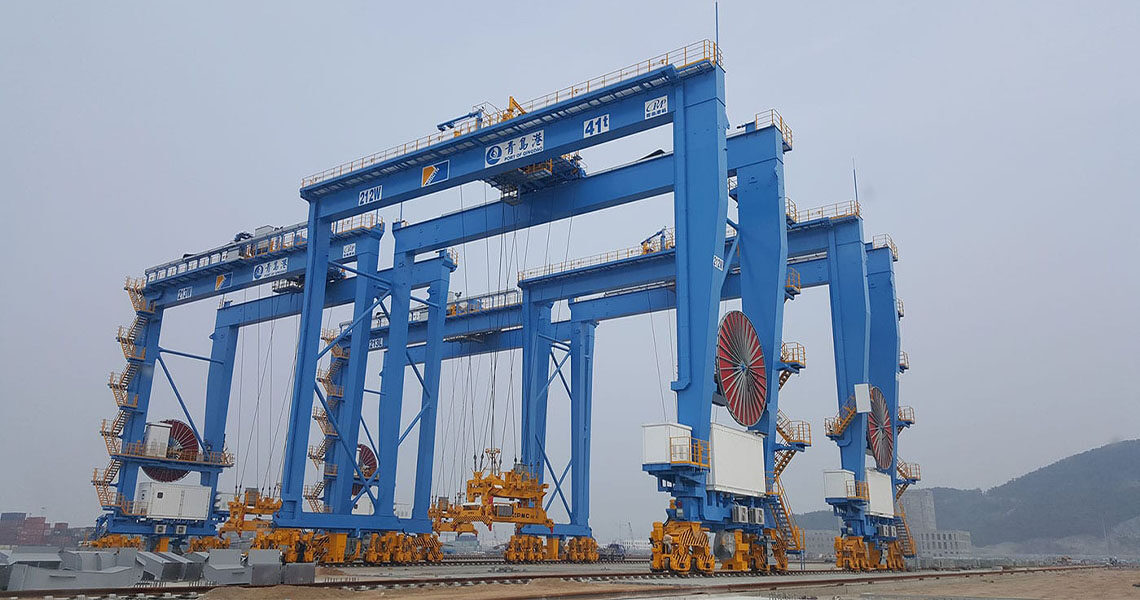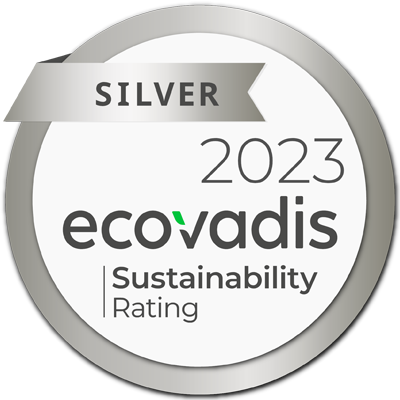- Tratos Product: TRATOSFlex ESDB
- Location: Qingdao, China
- Direct Client: ZPMC / Qingdao Heavy Machinery
- Final Client: QQCTN
- Scope: Cables for high speed reeling, automation project.
- Application: Reeling
Tratos & ZPMC / Qingdao Heavy Machinery & QQCTN cooperation
QQCTN in Qingdao, was the first fully automated terminal in Asia, and remains one of the technologically most advanced. Located at the South bank of Qingdao Qianwan port area, it has a capacity to handle 5.2 million TEUs and 24000 TEU plus Ultra Large Vessels. The project is a joint venture between the Port of Qingdao, Cosco, APM Terminals (18%), DP World, and Pan Asia International Shipping (HK) Ltd.
TRATOS supplied both OEM ZPMC and Qingdao Heavy Machinery Tratosflex cables to power 38 ASC, with challenging speeds of up to 270 mpm. Currently the two first phases were fully equipped with TRATOSFLEX ESDB cables for high speed reeling, on all ASC cranes.
Tratosflex ESDB, was specifically designed for high-speed reeling. Tratosflex features a unique internal cable design, with the structure tightened against the internal relative movement. This prevents the cable from twisting and leading to possible breakage – extremely dangerous when reeling at speeds up to 300m/m. As a result of this sophisticated, reliable design, ZPMC has teamed up with Tratos on Automation projects at Ports & Terminals involving ASC or E-RTG running at high speeds.
Qingdao Qianwan Container Terminal
Operating 24 Hours a day, 7 days a week, 356 days a year, the Qingdao Qianwan Container Terminal (QQCT) is located in the Qingdao Economic & Technology Development Zone next to the customs bonded area and only 68 km away from Qingdao city, connected by the Jiaozhou Bay Expressway. This is a natural silt-free, deep-water terminal that doesn’t freeze. QQCT is connected globally by more than 170 container marine lines.
QQCT has outstanding road access with the Jinan-Qingdao Highway, Yantai-Qingdao Highway and 308 National Highway providing access to the burgeoning industrial and agricultural regions of the Shandong Province.
The Tongsan Highway running North-South along the coast, the Qinglan Highway running east to the west and Jiaozhou-Huangdao Railway inside the terminal altogether, QQCT has excellent connections with the hinterland. Furthermore, Jiaozhou Bay Cross-sea Bridge and Jiaozhou Bay Subsea Tunnel have greatly shortened the distance between QQCT and Qingdao downtown.
Facilities
- Container berths: 11
- Berth length: 3,400m
- Container Yard: 2.25 million m2
- Draught: 17.5m
- Super Post Panamax Quay Cranes: 39
- Rubber tired gantry cranes: 11
- Advanced Terminal Management System
- Annual capacity: 6.5 million TEU
As an international container terminal, QQCT is managed by a blend of experienced international and local managers, and supported by the most modern and advanced equipment and technology. Its world class container handling facility provides efficient and cost-effective service for its customers.
The future of automated ports
Although ports have adopted automation more slowly than comparable sectors, notably mining and warehousing, the pace is now starting to accelerate. Automated ports are safer than conventional ones. The number of human-related disruptions falls, and performance becomes more predictable. Yet the up-front capital expenditures are quite high, and the operational challenges—a shortage of capabilities, poor data, siloed operations, and difficulty handling exceptions—are very significant.
Successful automated ports show that careful planning and management can surmount these difficulties: operating expenses could fall by 25 to 55 percent and productivity could rise by 10 to 35 percent. And in the long run, these investments will lead the way toward a new paradigm—call it Port 4.0—the shift from asset operator to service orchestrator, part of a larger transition to Industry 4.0, or digitally enabled efficiency gains throughout the world economy. Port 4.0 will generate more value for port operators, suppliers, and customers alike, but that value isn’t proportionally distributed across ports and their ecosystems. Innovative business models and forms of collaboration will be required to realize this vision.
Did you know?
The first automated container port was developed in Europe in the early 1990s. Since then, many ports—more than 20 in the past six years—have installed equipment to automate at least some of the processes in their terminals (see sidebar, “What is port automation?”). Almost 40 partly or fully automated ports now do business in various parts of the world, and the best estimates suggest that at least $10 billion has been invested in such projects. The momentum will probably accelerate: an additional $10 billion to $15 billion is expected over the next five years.
Tratos supports sustainable developments of ports infrastructure
Tratos is very pleased to supply its high-quality cables to the ports around the world. In doing so, Tratos supports the global endeavours of port authorities in upgrading and improving their operational capabilities, which contributes to the sustainable development of ports and achieving the 17 UN Global Goals.
With this project Tratos has supported:
#Envision2030 Goal 3: Good Health and Well-being
By 2030, substantially reduce the number of deaths and illnesses from hazardous chemicals and air, water and soil pollution and contamination
#Envision2030 Goal 8: Decent Work and Economic Growth
- Achieve higher levels of economic productivity through diversification, technological upgrading and innovation, including through a focus on high-value added and labour-intensive sectors
- Improve progressively, through 2030, global resource efficiency in consumption and production and endeavour to decouple economic growth from environmental degradation, in accordance with the 10-year framework of programmes on sustainable consumption and production, with developed countries taking the lead
#Envision2030 Goal 11: Sustainable Cities and Communities
- By 2030, significantly reduce the number of deaths and the number of people affected and substantially decrease the direct economic losses relative to global gross domestic product caused by disasters, including water-related disasters, with a focus on protecting the poor and people in vulnerable situations
#Envision2030 Goal 14: Life Below Water
Targets
- By 2025, prevent and significantly reduce marine pollution of all kinds, in particular from land-based activities, including marine debris and nutrient pollution
- Minimize and address the impacts of ocean acidification, including through enhanced scientific cooperation at all levels










